Popular categories
Looking for a yarn?

53% Cotton, 33% Viscose, 14% Linen
from 3.05 $ /50g
Order DROPS Belle from Wool Warehouse Direct Ltd
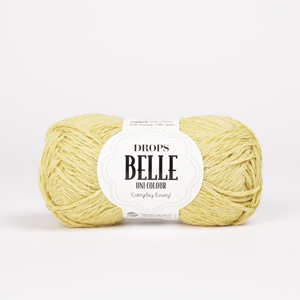
|
DROPS Belle uni colour 53% Cotton, 33% Viscose, 14% Linen |
3.05 $ /50g |
Order |
Clicking the ORDER button will redirect you to Wool Warehouse Direct Ltd website
Order DROPS Buttons

Arched (white) No. 521
OrderClicking the ORDER button will redirect you to Wool Warehouse Direct Ltd website
Order DROPS Needles & Hooks
Clicking the ORDER button will redirect you to Wool Warehouse Direct Ltd website
The yarn cost is calculated from the pattern’s smallest size and the yarn’s cheapest product type. Looking for an even better price? You might find it on the DROPS Deals!
Morning Moon Cardigan
Knitted jacket in DROPS Belle. The piece is worked top down with stockinette stitch, raglan, V-neck and rolled edges. Sizes S-XXXL.
Change language:
English (US/in)- English (US/in)
- Česky
- Dansk
- Deutsch
- Eesti keel
- English (UK/cm)
- Español
- Français
- Íslenska
- Italiano
- Magyar
- Nederlands
- Norsk
- Polski
- Português
- Suomi
- Svenska
- English (UK/cm), Bulgaria
- English (UK/cm), Croatia
- English (UK/cm), Greece
- English (UK/cm), Latvia
- English (UK/cm), Lithuania
- English (UK/cm), Romania
- English (UK/cm), Slovenia
- Česky, Slovakia
#morningmooncardigan
DROPS Design: Pattern vs-114Yarn group B
-------------------------------------------------------
SIZES:
S – M – L – XL – XXL – XXXL
Finished measurements:
Chest measurements: 88-96-104-114-126-138 cm = 34⅝"-37¾"-41"-45"-49½"-54¼"
Full length: 52-54-56-58-60-62 cm = 20½"-21¼"-22"-22¾"-23⅝"-24⅜"
All measurements in charts are in cm.
YARN:
DROPS BELLE from Garnstudio (belongs to yarn group B)
400-450-500-550-600-650 g color 26, pearl
BUTTONS:
DROPS BUTTONS NO 521: 3 items in all sizes.
NEEDLES:
DROPS CIRCULAR NEEDLES SIZE 4 MM = US 6: Length 40 cm = 16" and 80 cm = 32".
DROPS DOUBLE POINTED NEEDLES SIZE 4 MM = US 6.
The technique MAGIC LOOP can be used – you then only need 80 cm = 32" circular needle in each size.
KNITTING GAUGE:
21 stitches in width and 28 rows in height with stockinette stitch = 10 x 10 cm = 4" x 4".
NOTE: Needle size is only a guide. If you get too many stitches on 10 cm = 4", change to a larger needle size. If you get too few stitches on 10 cm = 4", change to a smaller needle size.
-------------------------------------------------------
Alternative Yarn – See how to change yarns here
Yarn Groups A to F – Use the same pattern and change the yarn here
Yarn usage using an alternative yarn – Use our yarn converter here
-------------------------------------------------------
You might also like...

53% Cotton, 33% Viscose, 14% Linen
from 3.05 $ /50g
Order DROPS Belle from Wool Warehouse Direct Ltd

|
DROPS Belle uni colour 53% Cotton, 33% Viscose, 14% Linen 3.05 $ /50g Order |
Clicking the ORDER button will redirect you to Wool Warehouse Direct Ltd website
Order DROPS Buttons

Arched (white) No. 521
OrderClicking the ORDER button will redirect you to Wool Warehouse Direct Ltd website
Order DROPS Needles & Hooks
Clicking the ORDER button will redirect you to Wool Warehouse Direct Ltd website
The yarn cost is calculated from the pattern’s smallest size and the yarn’s cheapest product type. Looking for an even better price? You might find it on the DROPS Deals!
Pattern instructions
EXPLANATIONS FOR THE PATTERN:
-------------------------------------------------------
PATTERN (for bands):
See diagrams A.1 and A.2. The diagrams show all rows in the pattern from the right side.
RAGLAN:
All increases are worked from the right side!
Increase for raglan before/after the marker-thread as follows: Work until there is 1 stitch left before the marker thread, make 1 yarn over, knit 2 (marker thread sits between these 2 stitches) make 1 yarn over.
On the next row (wrong side) work the yarn overs as follows:
BEFORE MARKER-THREAD:
Purl the back loop.
AFTER MARKER-THREAD:
Slip the yarn-over off the left needle and replace it the other way round (insert left needle through back when replacing it). Purl the front loop.
V-NECK:
All increases are worked from the right side!
Increase as follows: Work the left band as before, make 1 yarn over, work until there are 4 stitches left, make 1 yarn over, work the right band as before.
On the next row (= wrong side) work the yarn overs as follows:
AFTER RIGHT BAND:
Slip the yarn-over off the left needle and replace it the other way round (insert left needle through back when replacing it). Purl the front loop.
BEFORE LEFT BAND:
Purl the back loop.
BUTTONHOLES:
Work buttonholes on the right band (when the garment is worn) from the wrong side: Work 4 band stitches as before, make 1 yarn over. On the next row (right side) work until there are 6 stitches left, slip 1 stitch knit-wise, knit the yarn over, pass the slipped stitch over, work 4 band stitches as before.
The first buttonhole is worked when the increases for the V-neck are finished (neck measures approx. 14-14-15-15-16-16 cm = 5½"-5½"-6"-6"-6¼"-6¼"). The other 2 buttonholes are worked with approx. 3½-3½-3½-4-4-4½ cm = 1¼"-1¼"-1¼"-1½"-1½"-1⅝" between each one.
DECREASE TIP (for sleeves):
Decrease 1 stitch on each side of the marker-thread as follows: Work until there are 3 stitches left before the marker-thread, knit 2 together, knit 2 (marker-thread sits between these 2 stitches), slip 1 stitch knit-wise, knit 1 and pass the slipped stitch over the knitted stitch.
-------------------------------------------------------
START THE PIECE HERE:
-------------------------------------------------------
JACKET – SHORT OVERVIEW OF THE PIECE:
The pattern uses both long and short needles; start with the length which fits the number of stitches and change when necessary.
The bands are worked first, then stitches are cast on between them and the yoke is worked with circular needle, back and forth from mid-front and top down. When the yoke is finished, it is divided for the body and sleeves. The body is continued back and forth, while the sleeves wait. The sleeves are worked in the round.
RIGHT BAND:
Cast on 4 stitches with double pointed needles size 4 MM = US 6 and DROPS Belle. Work A.1 back and forth for 17-17-17½-17½-18-18½ cm = 6¾"-6¾"-6⅞"-6⅞"-7"-7⅛". Cut the strand and lay the band to one side.
LEFT BAND:
Cast on 4 stitches with double pointed needles size 4 MM = US 6 and DROPS Belle. Work A.2 back and forth for 17-17-17½-17½-18-18½ cm = 6¾"-6¾"-6⅞"-6⅞"-7"-7⅛". The last row is from the wrong side. Now cast on stitches as follows:
YOKE:
Change to circular needle size 4 MM = US 6. Work the left band as before from the right side, cast on 76-76-78-78-80-82 stitches, work the right band as before from the right side = 84-84-86-86-88-90 stitches. Purl 1 row from the wrong side with 4 band-stitches worked as before on each side.
Insert 4 marker-threads, without working the stitches: Count 6 stitches (= front piece), insert 1 marker-thread, count 18 stitches (= sleeve), insert 1 marker-thread, count 36-36-38-38-40-42 stitches (= back piece), insert 1 marker-thread, count 18 stitches (= sleeve), insert 1 marker-thread, there are 6 stitches left on the row (= front piece).
Work stockinette stitch back and forth with 4 band stitches on each side, AT THE SAME TIME increase for both RAGLAN and V-NECK – read description above. Therefore, read the next section before continuing. REMEMBER THE KNITTING GAUGE!
Increase for the V-neck on both front pieces every 2nd row 16-16-17-17-18-19 times, then every 4th row 2 times. A total of 18-18-19-19-20-21 increases for the V-neck on each front piece. Remember the BUTTONHOLES – read description above.
Increase for raglan before and after all 4 marker-threads, every 2nd row (= 8 increased stitches) 22-26-29-34-35-36 times. Then only increase on the front and back pieces (= 4 increased stitches) 0-0-0-0-3-6 times = 176-208-232-272-292-312 increased stitches for raglan.
When all the increases for both raglan and V-neck are finished, there are 296-328-356-396-420-444 stitches.
Continue working without further increases until the yoke measures 19-21-23-25-28-30 cm = 7½"-8¼"-9"-9¾"-11"-11¾" from mid-back.
DIVIDE FOR BODY AND SLEEVES:
On the next row work as follows: 4 band stitches as before, work 43-47-51-56-61-66 stockinette stitch (= front piece), place the next 60-68-74-84-86-88 stitches on 1 thread for the sleeve, cast on 10-10-12-12-14-16 stitches (in side under sleeve), work 82-90-98-108-118-128 stockinette stitches (= back piece), place the next 60-68-74-84-86-88 stitches on 1 thread for the sleeve, cast on 10-10-12-12-14-16 stitches (in side under sleeve), work 43-47-51-56-61-66 stockinette stitches and 4 band stitches as before (front piece). The body and sleeves are finished separately. The piece is now measured from here!
BODY:
= 196-212-232-252-276-300 stitches.
Continue stockinette stitch back and forth with 4 band stitches as before on each side until the body measures 28-28-28-28-27-27 cm = 11"-11"-11"-11"-10⅝"-10⅝" from the division – remember the BUTTONHOLES. Now work a rolled edge and decrease 1 stitch mid-back by working 2 stitches together (195-211-231-251-275-299 stitches) as follows from the right side: Work the band as before, * knit 1, purl 1 * until there are 4 stitches left, work the band as before.
Work 3 rows of stockinette stitch. Bind off. The jacket measures approx. 52-54-56-58-60-62 cm = 20½"-21¼"-22"-22¾"-23⅝"-24⅜" from the shoulder.
SLEEVES:
Place the 60-68-74-84-86-88 stitches from the thread on the one side of the piece on short circular needle/double pointed needles size 4 MM = US 6 and knit up 1 stitch in each of the 10-10-12-12-14-16 stitches cast on under the sleeve = 70-78-86-96-100-104 stitches. Insert a marker-thread in the middle of the new stitches under the sleeve. This is used when decreasing. The round starts here.
Work stockinette stitch in the round for 3-4-3-4-2-4 cm = 1⅛"-1½"-1⅛"-1½"-¾"-1½". Now decrease 2 stitches under the sleeve – read DECREASE TIP. Decrease like this every 6-4-3-2-2-1½ cm = 2⅜"-1½"-1⅛"-¾"-¾"-½" a total of 6-9-12-16-17-18 times = 58-60-62-64-66-68 stitches.
Work until the sleeve measures 45-44-43-42-39-38 cm = 17¾"-17¼"-17"-16½"-15¼"-15" (with 1 cm = ⅜" left to finished length). Work rib for 1 round (knit 1, purl 1), then knit 3 rounds. Bind off. The sleeve measures approx. 46-45-44-43-40-39 cm = 18"-17¾"-17¼"-17"-15¾"-15¼".
ASSEMBLY:
Sew the buttons onto the left band.
Sew together the bands from the front pieces (mid-back), then sew the bands to the neckline.
Diagram
All measurements in charts are in cm.

|
= knit from right side, purl from wrong side |

|
= purl from right side, knit from wrong side |


What can you do with our patterns? You can share DROPS patterns online, using the pattern original picture, materials, name and number. But you are NOT ALLOWED to reproduce the complete pattern digitally in any way. Yarn stores are welcome to use the DROPS pattern database to promote the sale of our assortment. You can print out our patterns, make as many copies as you’d like. The only thing we ask is that you don't make any changes / additions to the original printed document. And that the patterns according to the DROPS philosophy are given out to the consumers for free. Editorials that wish to publish our patterns in printed books or magazines can contact us for more information. The sale of garments based on DROPS patterns is permitted as long as they are sold as single items or per order. Further commercial use of the patterns is not permitted. It has to be clearly stated that the garment is made based on a design from DROPS DESIGN. The use of clothing labels of which DROPS DESIGN forms part is conditioned by the inclusion of the following text: “A DROPS DESIGN made by …..”. The use of DROPS photos for marketing purposes/sales is only permitted in connection with the use/sale of DROPS products. The photos may not be cut or edited and the logo should be clearly visible.
We reserve the right to withdraw the permission for use of our patterns at any time, notwithstanding the reason.
Each of our patterns has specific tutorial videos to help you.
These step-by-step tutorials might also help you:
Why is the knitting/crochet tension so important?
Knitting tension is what determines the final measurements of your work, and is usually measured per 10 x 10 cm. It is provided like so: number of stitches in width x number of rows in height - eg: 19 stitches x 26 rows = 10 x 10 cm.
The knitting tension is very individual; some people knit/crochet loosely while others work tightly. You adjust the knitting tension with the needle size, which is why the suggested needle size only serve as a guide! You need to adjust this (up or down) to ensure that YOUR knitting tension matches the knitting tension provided in the pattern. If you work with a different knitting tension than provided you will have a different yarn consumption, and your work will have different measurements than what the pattern suggests.
The knitting tension also determines which yarns can replace each other. As long as you achieve the same knitting tension you can replace one yarn with another.
See DROPS lesson: How to measure your tension/gauge
See DROPS video: How to make a gauge tension swatch
How do I know how many balls of yarn I need?
The required amount of yarn is provided in grams, eg: 450 g. To calculate how many balls you’ll need you first need to know how many grams are in 1 ball (25g, 50g or 100g). This information is available if you click on the individual yarn quality on our pages. Divide the amount required with the amount of each ball. For example, if each ball is 50g (the most common amount), the calculation will be as follows: 450 / 50 = 9 balls.
Can I use a different yarn than what the pattern suggests?
The important thing when changing from one yarn to another is that the knitting/crochet tension remains the same. This is so that the measurements of the finished piece will be the same as on the sketch provided. It is easier to achieve the same knitting tension using yarns from the same yarn group. It is also possible to work with multiple strands of a thinner yarn to achieve the knitting tension of a thicker one. Please try our yarn converter. We recommend you to always work a test swatch.
Please NOTE: when changing yarn the garment might have a different look and feel to the garment in the photo, due to individual properties and qualities of each yarn.
See DROPS lesson: Can I use a different yarn than the one mentioned in the pattern?
What are the yarn groups?
All our yarns are categorised into yarn groups (from A to F) according to thickness and knitting tension – group A contains the thinnest yarns and group F the thickest. This makes it easier for you to find alternative yarns to our patterns, should you wish to switch yarn. All yarns within the same group have a similar knitting tension and can easily replace each other. However, different yarn qualities have different structures and properties which will give the finished work a unique look and feel.
How do I use the yarn converter?
At the top of all our patterns you’ll find a link to our yarn converter, which is a helpful tool should you wish to use a different yarn than suggested. By filling in the yarn quality you wish to replace, the amount (in your size) and number of strands, the converter will present good alternative yarns with the same knitting tension. Additionally it will tell you how much you’ll require in the new qualities and whether you’ll need to work with multiple strands. Most skeins are 50g (some are 25g or 100g).
If the pattern is worked with multiple colours, every colour will have to be converted separately. Similarly, if the pattern is worked with several strands of different yarns (for example 1 strand Alpaca and 1 strand Kid-Silk) you will have to find alternatives for each, individually.
Why do you show discontinued yarns in the patterns?
Since different yarns have different qualities and textures we have chosen to keep the original yarn in our patterns. However, you can easily find options among our available qualities by using our yarn converter, or simply pick a yarn from the same yarn group.
It is possible that some retailers still have discontinued yarns in stock, or that someone has a few skeins at home that they would like to find patterns for.
The yarn converter will provide both alternative yarn as well as required amount in the new quality.
What size should I knit?
If you think it's hard to decide what size to make, it can be a good idea to measure a garment you own already and like the size of. Then you can pick the size by comparing those measures with the ones available in the pattern's size chart.
You'll find the size chart at the bottom of the pattern.
See DROPS lesson: How to read size chart
Why do I get the wrong knitting tension with the suggested needle size?
The needle size provided in the pattern serves only as a guide, the important thing is to follow the knitting tension. And since knitting tension is very individual, you will have to adjust the needle size to ensure that YOUR tension is the same as in the pattern – maybe you’ll have to adjust 1, or even 2 needle sizes, up or down to achieve the correct tension. For this, we recommend that you work test swatches.
Should you work with a different knitting tension than the one provided, the measurements of the finished garment might deviate from the measurement sketch.
See DROPS lesson: How to measure your tension/gauge
See DROPS video: How to make a gauge tension swatch
Why is the pattern worked top-down?
Working a garment top-down provides more flexibility and room for personal adjustment. For example it is easier to try the garment on while working, as well as making adjustments to length of yoke and shoulder caps.
The instructions are carefully explaining every step, in the correct order. Diagrams are adjusted to the knitting direction and are worked as usual.
How do I work according to a knitting diagram?
The diagram depicts all rows/rounds, and every stitch seen from the right side. It is read from bottom to top, from right to left. 1 square = 1 stitch.
When working back and forth, every other row is worked from the right side and every other row is worked from the wrong side. When working from the wrong side, the diagram will have to be worked reversed: from left to right, knit stitches are purled, purl stitches are knit etc.
When working in the round every round is worked from the right side and the diagram are worked from right to left on all rounds.
See DROPS lesson: How to read knitting diagrams
How do I work according to a crochet diagram?
The diagram depicts all rows/rounds, and every stitch seen from the right side. It is worked from bottom to top, from right to left.
When working back and forth every other row is worked from the right side: from right to left and every other row is worked from the wrong side: from left to right.
When working in the round, every row in the diagram are worked from the right side, from right to left.
When working a circular diagram you start in the middle and work your way outwards, counter clockwise, row by row.
The rows usually start with a given number of chain stitches (equivalent to the height of the following stitch), this will either be depicted in the diagram or explained in the pattern.
See DROPS lesson: How to read crochet diagrams
How do I work several diagrams simultaneously on the same row/round?
Instructions for working several diagrams after each other on the same row/round, will often be written like so: “work A.1, A.2, A.3 a total of 0-0-2-3-4 times". This means you work A.1 once, then A.2 is worked once, and A.3 is repeated (in width) the number of times provided for your size – in this case like so: S = 0 times, M = 0 times, L=2 times, XL= 3 times and XXL = 4 times.
The diagrams are worked as usual: begin with the first row in A.1, then work the first row in A.2 etc.
See DROPS lesson: How to read knitting diagrams
See DROPS lesson: How to read crochet diagrams
Why are the sleeves shorter in larger sizes?
The total width of the garment (from wrist-to-wrist) will be larger in the larger sizes, despite the actual sleeves being shorter. The larger sizes have longer sleeve caps and wider shoulders, so there will be a good fit in all sizes.
Where on the garment is the length measured?
The measurement sketch/schematic drawing provides information regarding the full length of the garment. If it’s a jumper or a jacket the length is measured from the highest point on the shoulder (usually closest to the neckline), and straight down to the bottom of the garment. It is NOT measured from the tip of shoulder. Similarly, the length of yoke is measured from the highest point on the shoulder and down to where yoke is split into body and sleeves.
See DROPS lesson: How to read a schematic drawing
What is a repeat?
Diagrams are often repeated on the round or in height. 1 repeat is the diagram the way it appears in the pattern. If it says to work 5 repeats of A.1 in the round, then you work A.1 a total of 5 times after/next to each other in the round. If it says to work 2 repeats of A.1 vertically/in height you work the entire diagram once, then begin again at the start and work the entire diagram one more time.
Why does the piece start with more chain stitches than it’s worked with?
Chain stitches are slightly narrower than other stitches and to avoid working the cast-on edge too tight, we simply chain more stitches to begin with. The stitch count will be adjusted on the following row to fit the pattern and measurement sketch.
Why increase before the rib edge when the piece is worked top-down?
The rib edge is more elastic and will contract slightly compared to, for example, stocking stitch. By increasing before the rib edge, you avoid a visible difference in width between the rib edge and the rest of the body.
Why increase in the cast-off edge?
It’s very easy to cast off too tightly, and by making yarn overs while casting off (and simultaneously casting these off) you avoid a too tight cast off edge.
See DROPS video: How to bind off with yarn overs (yo)
How do I increase/decrease on every 3rd and 4th row/round alternately?
To achieve an even increase (or decrease) you can increase on, for example: every 3rd and 4th row alternately, like so: work 2 rows and increase on the 3rd row, work 3 rows and increase on the 4th. Repeat this until the increase is complete.
See DROPS lesson: Increase or decrease 1 st on every 3rd and 4th row alternately
How can I work a jacket in the round instead of back and forth?
Should you prefer to work in the round instead of back and forth, you may of course adjust the pattern. You’ll need to add steeks mid-front (usually 5 stitches), and follow the instructions. When you would normally turn and work from the wrong side, simply work across the steek and continue in the round. At the end you’ll cut the piece open, pick up stitches to work bands, and cover the cut edges.
See DROPS video: How to knit steeks and cut open
Can I work a jumper back and forth instead of in the round?
Should you prefer to work back and forth instead of in the round, you may of course adjust the pattern so you work the pieces separately and then assemble them at the end. Divide the stitches for the body in 2, add 1 edge stitch in each side (for sewing) and work the front and back pieces separately.
See DROPS lesson: Can I adapt a pattern for circular needles into straight needles?
Why is the pattern slightly different than what I see in the photo?
Pattern repeats can vary slightly in the different sizes, in order to get the correct proportions. If you’re not working the exact same size as the garment in the photo, yours might deviate slightly. This has been carefully developed and adjusted so that the complete impression of the garment is the same in all sizes.
Make sure to follow instructions and diagrams for your size!
How do I make a women’s size garment into a men’s size one?
If you have found a pattern you like which is available in women’s size it’s not very difficult to convert it to men’s size. The biggest difference will be the length of sleeves and body. Start working on the women size that you think would fit across the chest. The additional length will be worked right before you cast off for the armhole/sleeve cap. If the pattern is worked top-down you can add the length right after the armhole or before the first decrease on sleeve.
Regarding additional yarn amount, this will depend on how much length you add, but it is better with a skein too many than too few.
How do I prevent a hairy garment from shedding?
All yarns will have excess fibres (from production) that might come off as lint or shedding. Brushed yarns (ie hairier yarns) have more of these loose, excess fibres, causing more shedding.
Shedding also depends on what is worn under or over the garment, and whether this pulls at the yarn fibres. It’s therefore not possible to guarantee that there will be no shedding
Below are some tips on how to get the best result when working with hairier yarns:
1. When the garment is finished (before you wash it) shake it vigorously so the looser hairs come off. NOTE: do NOT use a lint roller, brush or any method that pulls at the yarn.
2. Place the garment in a plastic bag and put it in your freezer - the temperature will cause the fibres to become less attached to each other, and excess fibres will come off easier.
3. Leave in the freezer for a few hours before taking it out and shaking it again.
4. Wash the garment according to the instructions on the yarn label.
Why does my garment pill?
Pilling is a natural process that happens to even the most exclusive of fibers. It's a natural sign of wear and tear that is hard to avoid, and that is most visible in high friction areas of your garment like a sweater's arms and cuffs.
You can make your garment look as new by removing the pilling, using a fabric comb or a pill/lint remover.
In the meantime, you can read the questions and answers that others have left to this pattern or join the DROPS Workshop on Facebook to get help from fellow knitters/crocheters!
Morning Moon Cardigan |
|||||||
 |
 |
||||||
Knitted jacket in DROPS Belle. The piece is worked top down with stockinette stitch, raglan, V-neck and rolled edges. Sizes S-XXXL.
DROPS 249-16 |
|||||||
|
------------------------------------------------------- EXPLANATIONS FOR THE PATTERN: ------------------------------------------------------- PATTERN (for bands): See diagrams A.1 and A.2. The diagrams show all rows in the pattern from the right side. RAGLAN: All increases are worked from the right side! Increase for raglan before/after the marker-thread as follows: Work until there is 1 stitch left before the marker thread, make 1 yarn over, knit 2 (marker thread sits between these 2 stitches) make 1 yarn over. On the next row (wrong side) work the yarn overs as follows: BEFORE MARKER-THREAD: Purl the back loop. AFTER MARKER-THREAD: Slip the yarn-over off the left needle and replace it the other way round (insert left needle through back when replacing it). Purl the front loop. V-NECK: All increases are worked from the right side! Increase as follows: Work the left band as before, make 1 yarn over, work until there are 4 stitches left, make 1 yarn over, work the right band as before. On the next row (= wrong side) work the yarn overs as follows: AFTER RIGHT BAND: Slip the yarn-over off the left needle and replace it the other way round (insert left needle through back when replacing it). Purl the front loop. BEFORE LEFT BAND: Purl the back loop. BUTTONHOLES: Work buttonholes on the right band (when the garment is worn) from the wrong side: Work 4 band stitches as before, make 1 yarn over. On the next row (right side) work until there are 6 stitches left, slip 1 stitch knit-wise, knit the yarn over, pass the slipped stitch over, work 4 band stitches as before. The first buttonhole is worked when the increases for the V-neck are finished (neck measures approx. 14-14-15-15-16-16 cm = 5½"-5½"-6"-6"-6¼"-6¼"). The other 2 buttonholes are worked with approx. 3½-3½-3½-4-4-4½ cm = 1¼"-1¼"-1¼"-1½"-1½"-1⅝" between each one. DECREASE TIP (for sleeves): Decrease 1 stitch on each side of the marker-thread as follows: Work until there are 3 stitches left before the marker-thread, knit 2 together, knit 2 (marker-thread sits between these 2 stitches), slip 1 stitch knit-wise, knit 1 and pass the slipped stitch over the knitted stitch. ------------------------------------------------------- START THE PIECE HERE: ------------------------------------------------------- JACKET – SHORT OVERVIEW OF THE PIECE: The pattern uses both long and short needles; start with the length which fits the number of stitches and change when necessary. The bands are worked first, then stitches are cast on between them and the yoke is worked with circular needle, back and forth from mid-front and top down. When the yoke is finished, it is divided for the body and sleeves. The body is continued back and forth, while the sleeves wait. The sleeves are worked in the round. RIGHT BAND: Cast on 4 stitches with double pointed needles size 4 MM = US 6 and DROPS Belle. Work A.1 back and forth for 17-17-17½-17½-18-18½ cm = 6¾"-6¾"-6⅞"-6⅞"-7"-7⅛". Cut the strand and lay the band to one side. LEFT BAND: Cast on 4 stitches with double pointed needles size 4 MM = US 6 and DROPS Belle. Work A.2 back and forth for 17-17-17½-17½-18-18½ cm = 6¾"-6¾"-6⅞"-6⅞"-7"-7⅛". The last row is from the wrong side. Now cast on stitches as follows: YOKE: Change to circular needle size 4 MM = US 6. Work the left band as before from the right side, cast on 76-76-78-78-80-82 stitches, work the right band as before from the right side = 84-84-86-86-88-90 stitches. Purl 1 row from the wrong side with 4 band-stitches worked as before on each side. Insert 4 marker-threads, without working the stitches: Count 6 stitches (= front piece), insert 1 marker-thread, count 18 stitches (= sleeve), insert 1 marker-thread, count 36-36-38-38-40-42 stitches (= back piece), insert 1 marker-thread, count 18 stitches (= sleeve), insert 1 marker-thread, there are 6 stitches left on the row (= front piece). Work stockinette stitch back and forth with 4 band stitches on each side, AT THE SAME TIME increase for both RAGLAN and V-NECK – read description above. Therefore, read the next section before continuing. REMEMBER THE KNITTING GAUGE! Increase for the V-neck on both front pieces every 2nd row 16-16-17-17-18-19 times, then every 4th row 2 times. A total of 18-18-19-19-20-21 increases for the V-neck on each front piece. Remember the BUTTONHOLES – read description above. Increase for raglan before and after all 4 marker-threads, every 2nd row (= 8 increased stitches) 22-26-29-34-35-36 times. Then only increase on the front and back pieces (= 4 increased stitches) 0-0-0-0-3-6 times = 176-208-232-272-292-312 increased stitches for raglan. When all the increases for both raglan and V-neck are finished, there are 296-328-356-396-420-444 stitches. Continue working without further increases until the yoke measures 19-21-23-25-28-30 cm = 7½"-8¼"-9"-9¾"-11"-11¾" from mid-back. DIVIDE FOR BODY AND SLEEVES: On the next row work as follows: 4 band stitches as before, work 43-47-51-56-61-66 stockinette stitch (= front piece), place the next 60-68-74-84-86-88 stitches on 1 thread for the sleeve, cast on 10-10-12-12-14-16 stitches (in side under sleeve), work 82-90-98-108-118-128 stockinette stitches (= back piece), place the next 60-68-74-84-86-88 stitches on 1 thread for the sleeve, cast on 10-10-12-12-14-16 stitches (in side under sleeve), work 43-47-51-56-61-66 stockinette stitches and 4 band stitches as before (front piece). The body and sleeves are finished separately. The piece is now measured from here! BODY: = 196-212-232-252-276-300 stitches. Continue stockinette stitch back and forth with 4 band stitches as before on each side until the body measures 28-28-28-28-27-27 cm = 11"-11"-11"-11"-10⅝"-10⅝" from the division – remember the BUTTONHOLES. Now work a rolled edge and decrease 1 stitch mid-back by working 2 stitches together (195-211-231-251-275-299 stitches) as follows from the right side: Work the band as before, * knit 1, purl 1 * until there are 4 stitches left, work the band as before. Work 3 rows of stockinette stitch. Bind off. The jacket measures approx. 52-54-56-58-60-62 cm = 20½"-21¼"-22"-22¾"-23⅝"-24⅜" from the shoulder. SLEEVES: Place the 60-68-74-84-86-88 stitches from the thread on the one side of the piece on short circular needle/double pointed needles size 4 MM = US 6 and knit up 1 stitch in each of the 10-10-12-12-14-16 stitches cast on under the sleeve = 70-78-86-96-100-104 stitches. Insert a marker-thread in the middle of the new stitches under the sleeve. This is used when decreasing. The round starts here. Work stockinette stitch in the round for 3-4-3-4-2-4 cm = 1⅛"-1½"-1⅛"-1½"-¾"-1½". Now decrease 2 stitches under the sleeve – read DECREASE TIP. Decrease like this every 6-4-3-2-2-1½ cm = 2⅜"-1½"-1⅛"-¾"-¾"-½" a total of 6-9-12-16-17-18 times = 58-60-62-64-66-68 stitches. Work until the sleeve measures 45-44-43-42-39-38 cm = 17¾"-17¼"-17"-16½"-15¼"-15" (with 1 cm = ⅜" left to finished length). Work rib for 1 round (knit 1, purl 1), then knit 3 rounds. Bind off. The sleeve measures approx. 46-45-44-43-40-39 cm = 18"-17¾"-17¼"-17"-15¾"-15¼". ASSEMBLY: Sew the buttons onto the left band. Sew together the bands from the front pieces (mid-back), then sew the bands to the neckline. |
|||||||
Diagram explanations |
|||||||
|
|||||||

|
|||||||

|
|||||||
|
Have you made this or any other of our designs? Tag your pictures in social media with #dropsdesign so we can see them! Do you need help with this pattern?You'll find tutorial videos, a Comments/Questions area and more by visiting the pattern on garnstudio.com. © 1982-2024 DROPS Design A/S. We reserve all rights. This document, including all its sub-sections, has copyrights. Read more about what you can do with our patterns at the bottom of each pattern on our site. |
|||||||
With over 40 years in knitting and crochet design, DROPS Design offers one of the most extensive collections of free patterns on the internet - translated to 17 languages. As of today we count 309 catalogs and 11624 patterns - 11615 of which are translated into English (US/in).
We work hard to bring you the best knitting and crochet have to offer, inspiration and advice as well as great quality yarns at incredible prices! Would you like to use our patterns for other than personal use? You can read what you are allowed to do in the Copyright text at the bottom of all our patterns. Happy crafting!





















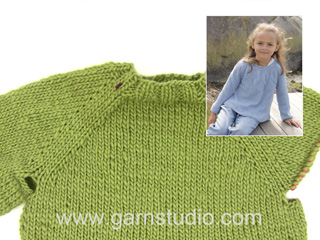
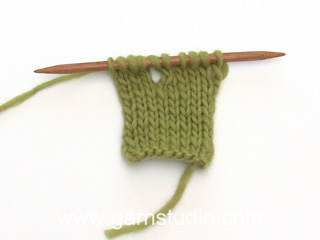

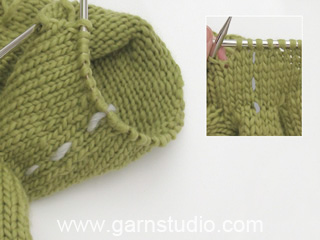




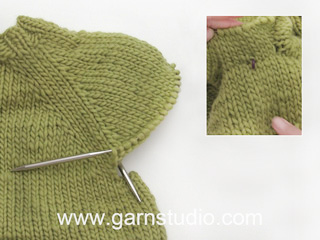

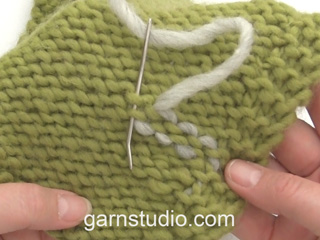
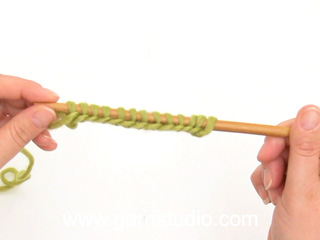
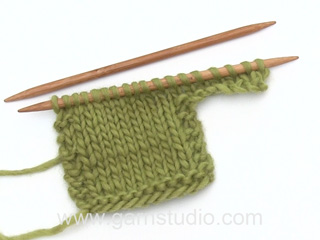

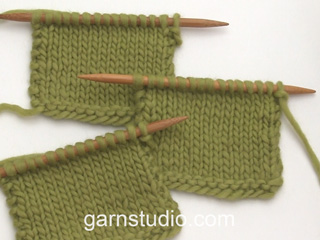

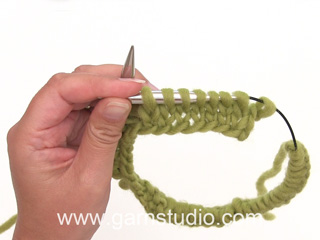
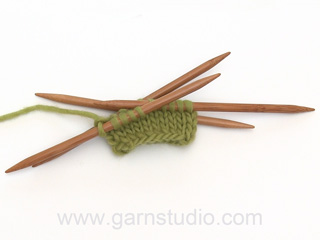
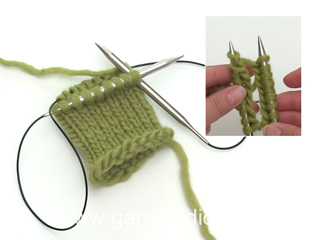
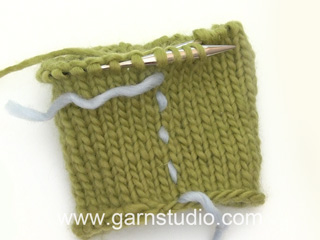






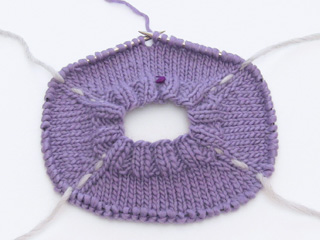










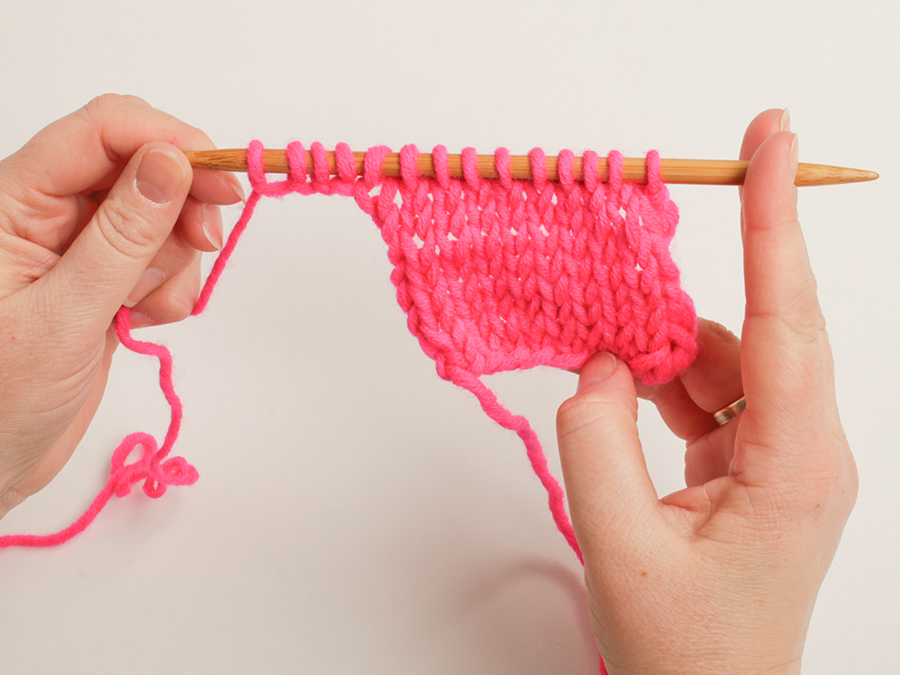








Comments / Questions (15)
Ciao. Non è chiaro nella traduzione italiana quando bisogna iniziare a fare la prima asola. Dalla foto capisco che occorre farla già dall'inizio del lavoro. Potrebbe specificare da quanti centimetri dall'inizio del lavoro? Inoltre ho notato un errore di ripetizione e lo cito ( ripetuto due volte bordo destro ) "Passare ai ferri circolari n° 4 mm. Lavorare il bordo destro come prima dal diritto del lavoro, avviare 76-76-78-78-80-82 maglie, lavorare il bordo destro ...."
30.06.2024 - 14:59DROPS Design answered:
Buonasera Giovanna, le asole vanno lavorate come indicato alla fine degli aumenti del collo, segua il numero indicato per la sua taglia. Grazie per la segnalazione: abbiamo corretto l'errore. Buon lavoro!
03.07.2024 - 18:25Ich bin jetzt am Ende des glatt rechten Rumpfteils angekommen und frage mich, mit welchen Knopflöchern ich beginnen soll?
31.05.2024 - 18:26Im having trouble understing what's going to happen with the original front pieces? Atm they're just flapping around from where they're attached to at the top of the cardigan-work in progress, from each side. Seemingly without purpose, also how do I know that they're lone enough as I can't increase now that they're on the project. I also don't understand what the meaning of them are?
29.05.2024 - 09:13DROPS Design answered:
Dear Maria, not sure exactly which part you mean, but the body is knitted downwards, in one piece, and the two small piece you started with should be sewn together and then sewn on to the neck (see the very last sentence of the instructions, under ASSEMBLY. I hope this helps. Happy Knitting!
29.05.2024 - 11:29Vad är det för skillnad på 249-16 respektive 206-34
06.04.2024 - 10:09Symbols = knit from right side, purl from wrong side symbols = purl from right side, knit from wrong side Not doing very well as I’m struggling to get started🤣 Does the above mean knit when on right right and then purl when on wrong side please?
04.04.2024 - 17:12DROPS Design answered:
Dear Sonny, the diagrams always show every pattern as you would see it from looking at it from the right side. Thus the stitches represented by the empty square symbol should be knitted from the right side, and purled from the wrong side. The stitches represented by the X symbole should be purled on the right side and knitted from the wrong side. Basically the A.1 is a K3/P1 ribbing, the A.2 is a P1/K3 ribbing. Happy Knitting!
05.04.2024 - 02:17Ik brei morning-afterpil moon cardigan en moest 2 biezen breien. Moet ik deze opzij leggen? Ik begrijp het breien van de pas niet.
28.03.2024 - 21:49DROPS Design answered:
Dag Rina,
Je breit eerst de rechter voorbies, knipt de draad af en die leg je aan de kant (dus zonder de steken af te kanten). Vervolgens brei je de linker voorbies, maar als je daarmee klaar bent hoef je de draad niet af te knippen. In plaats daarvan zet je steken op aan het einde van de eerstvolgende naald van die bies (zie paragraaf PAS) en daarna brei je verder met de rechter bies. Nu heb je beide biezen op de naald met steken ertussen.
03.04.2024 - 21:06Ich möchte die tolle Jacke stricken.Leider stehe ich jetzt schon auf dem Schlauch was das für eine Blende ist. Ist das sozusagen der Kragen hinten?
16.03.2024 - 14:29DROPS Design answered:
Liebe Karin, ja genau, die 2 Blende, die man am Anfang strickt, werden danach zusammengenäht und dann am Halsausschnitt angenäht. Viel Spaß beim Stricken!
18.03.2024 - 08:46Koen nämä nyt muotiin tulleet "ylhäältä alas, etu- takakappale yhdessä " -tehtävät neuleet raskaana niskahartia -seudulle. Yhden työn tein ja se riitti.
15.03.2024 - 19:40Super... und endlich viele neue Modelle Topdown!!!
01.03.2024 - 13:36Schlicht und einfach..... ein supertolles Basic-Modell
20.01.2024 - 13:26